You already know what this project is, and you're right. Using a stationary bicycle to generate your own electricity is not an earth-shattering idea. This concept comes up from time to time on Hackaday, and there is always lively discussion and armchair engineering in the comments that go along with it.
But, for all the people who discuss this, how many are willing to actually build it? And I mean really build it, not just slap an alternator and belt on and call it a day. I'd wager not too many. Then, out of those that do, how many are willing to use it? Even less so.
This project seeks to answer exactly what you can get out of a setup like this. The benefits of having a power source independent from availability of gas, sunlight, or wind are obvious, but how much power, and at what rate? What kinds of things can you realistically power? How soon do you get tired of it? And how well does the system hold up over time? The only way to answer these questions is to simply build one, and then go for a very long test drive.
This project doesn't take itself too seriously; I'm not suggesting this is going to replace your power company any time soon. But, you can generate real amounts of energy that are useful for real things in the real world.
Aside from day to day powering of my YouTube consumption laptop, I have used this bike to make a #3DBenchy on my 3D Printer and a piece of toast.
Be sure to read the project logs; there is important (but long winded) stuff in there.
One thing I always found kind of ironic is that to keep a human body in decent operating condition, we have to output some mechanical energy. That's called exercise. Already not a good look from a thermodynamic efficiency standpoint. Usually, the effort we put in ends up doing nothing of consequence - I challenge you to find a piece of exercise equipment that doesn't simply turn your hard work into heat, or require more energy, like a wall plug, to work properly. All that is aside the fact that some people will use orders of magnitude more energy than that in transportation to simply access the equipment. This project helps alleviate these problems by providing needed exercise, and by producing a small amount of energy usable in your own life, therefore reducing your dependence on external sources, which have been proven in almost all cases to have negative effects on the planet's environment.
I promised myself that if I ever got the opportunity to build this project, I would do it, so I did. And after nearly 1.5 years of operation (and with the 2023 Green Hacks deadline being as good a target as any), I have finally decided to publish it.
 alnwlsn
alnwlsn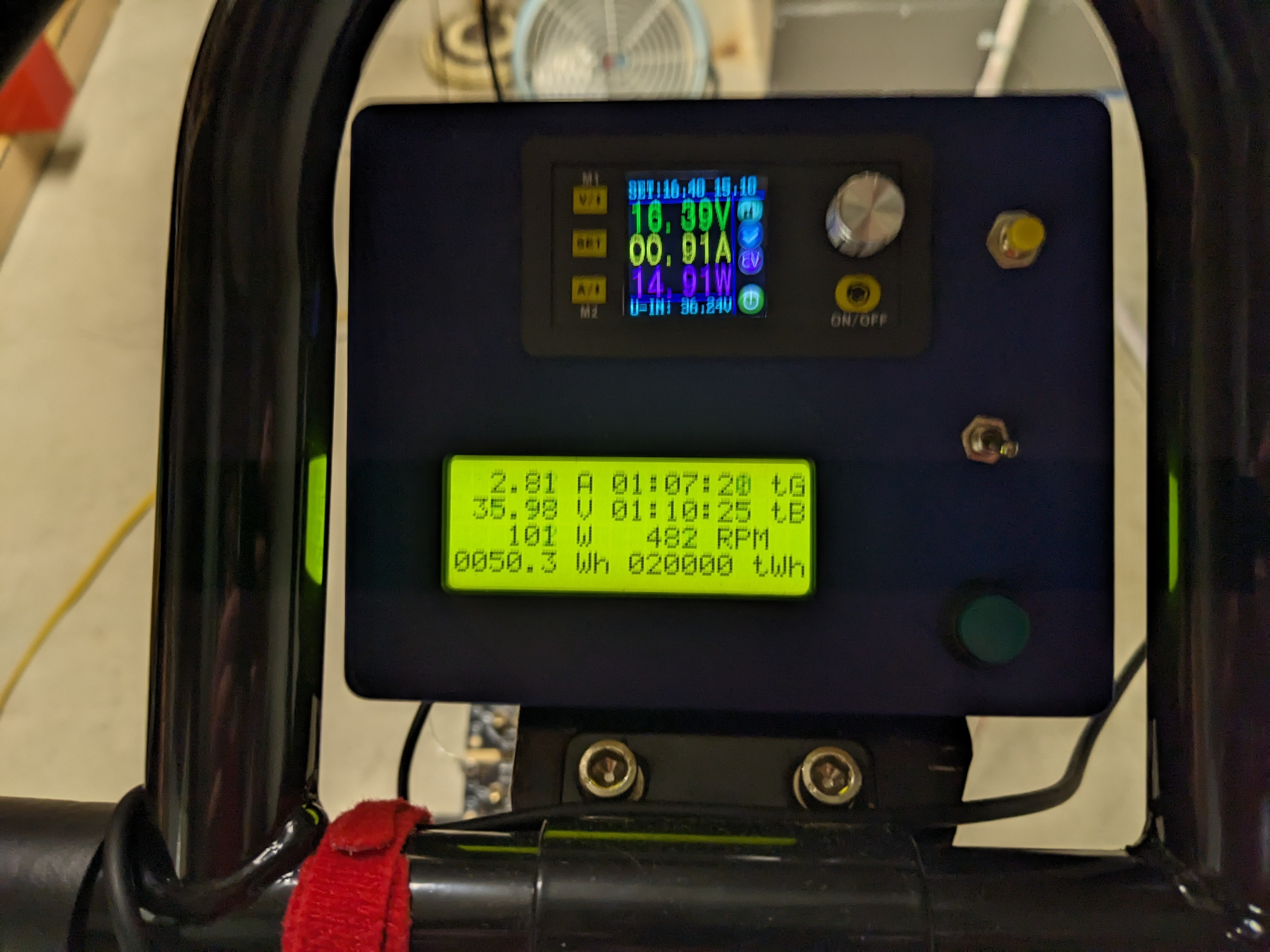
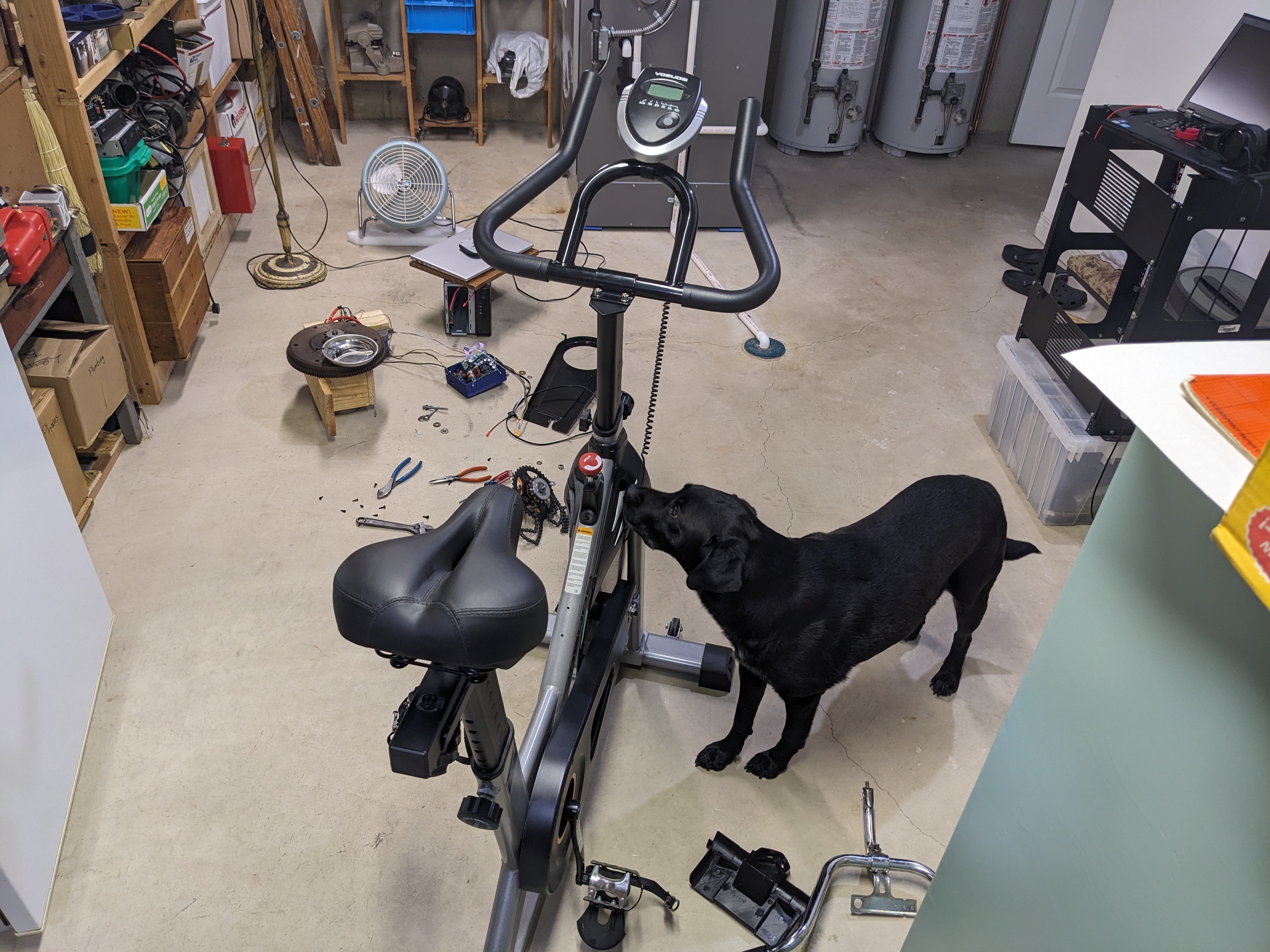
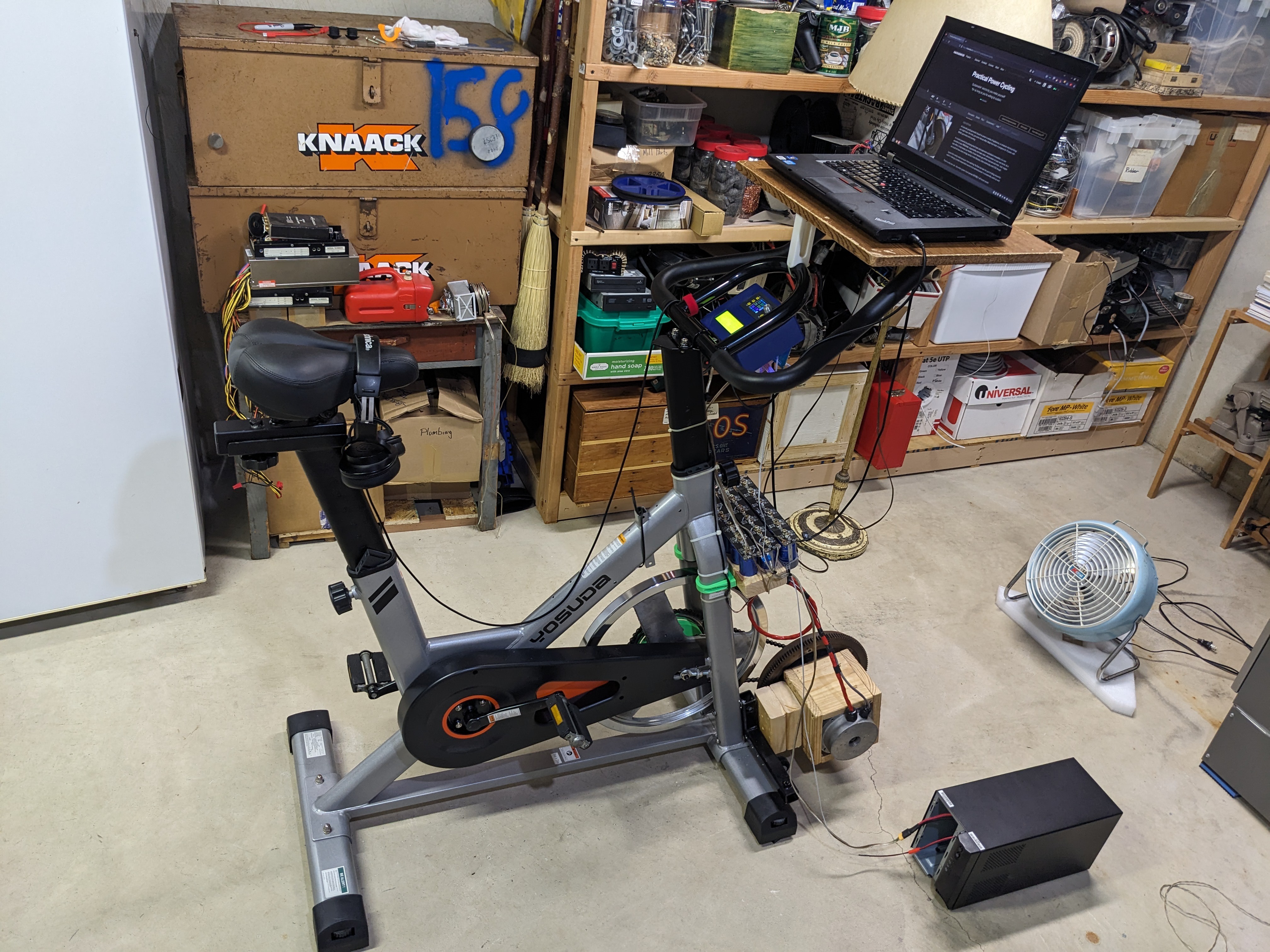
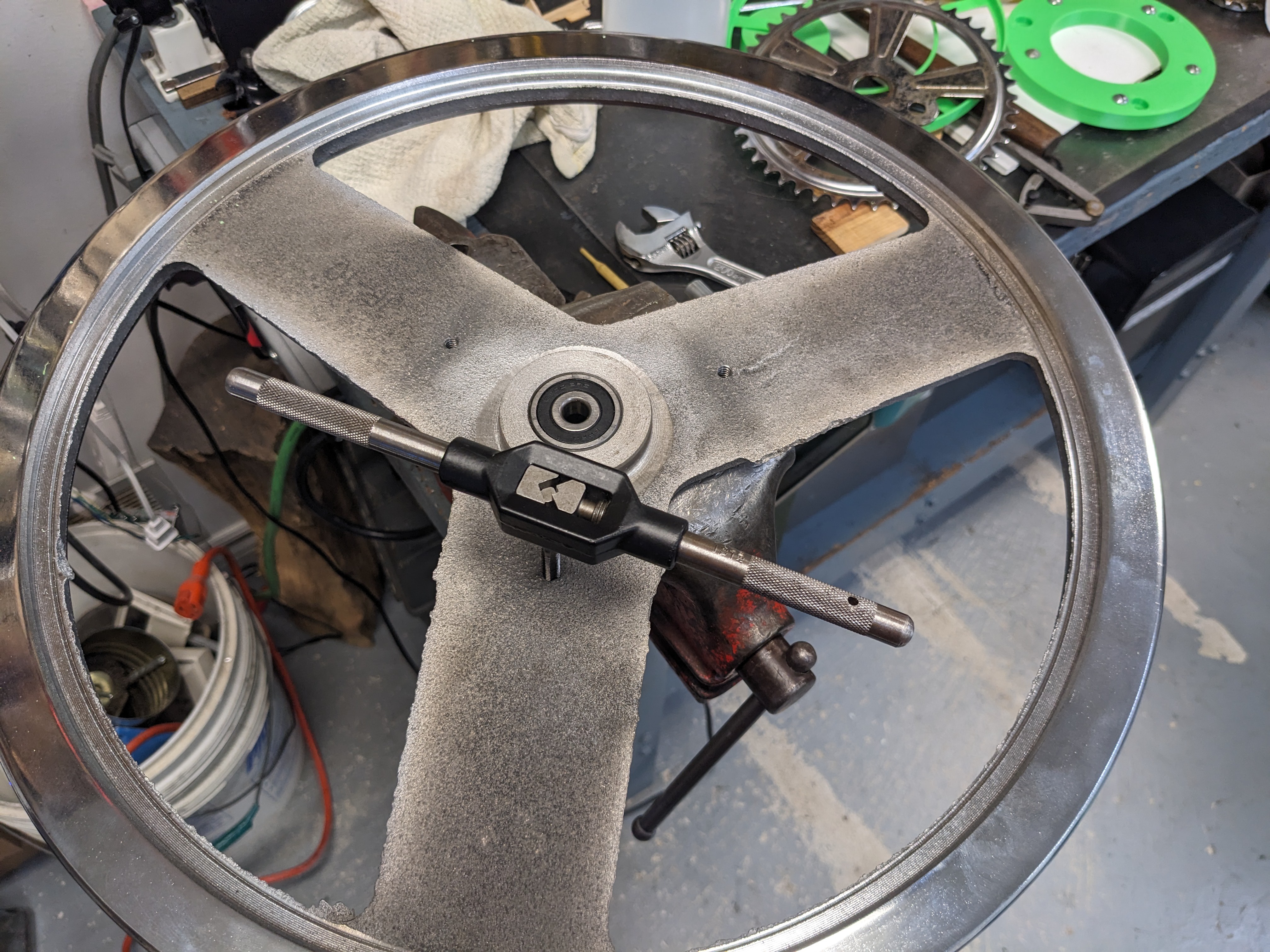
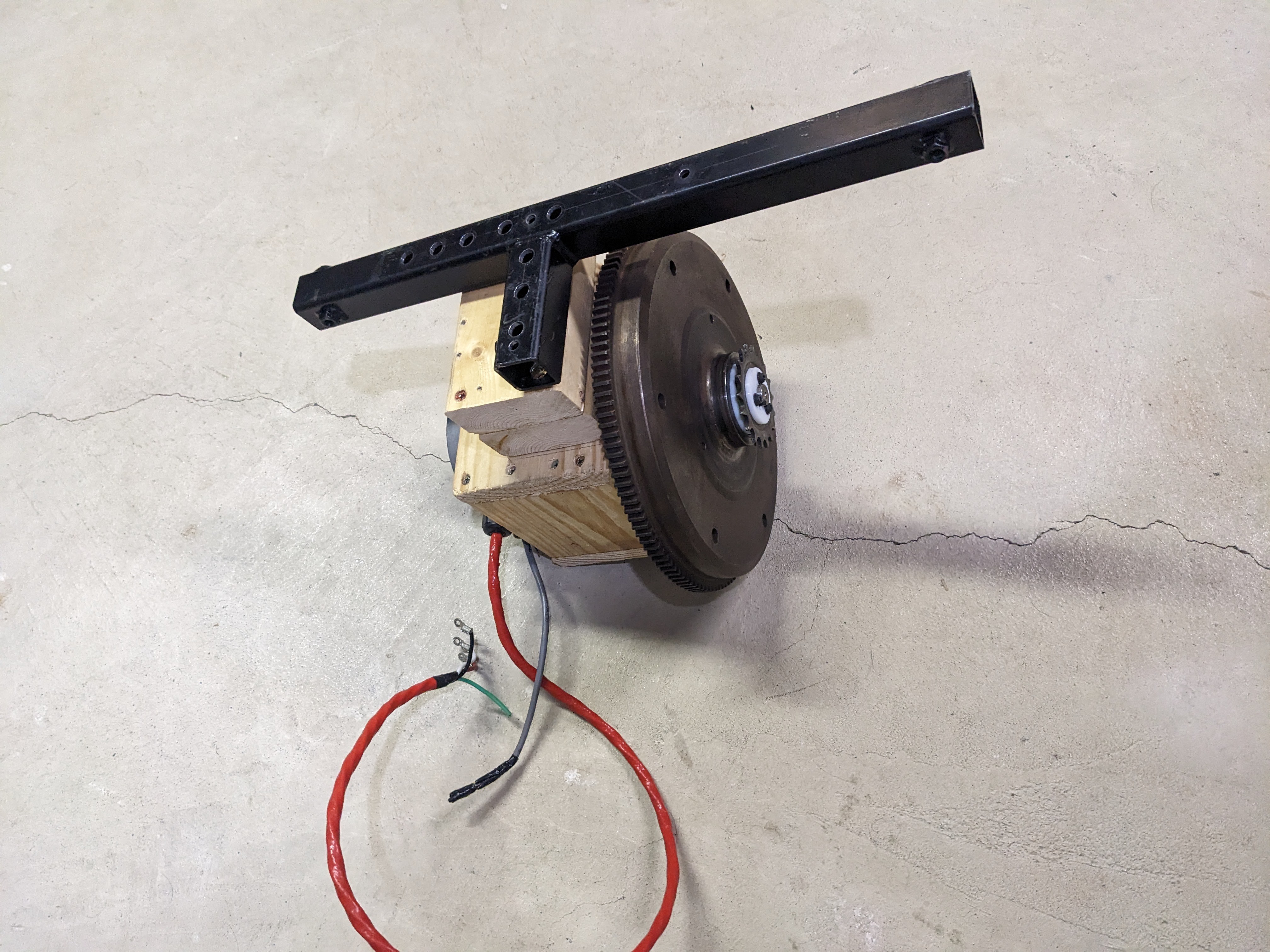
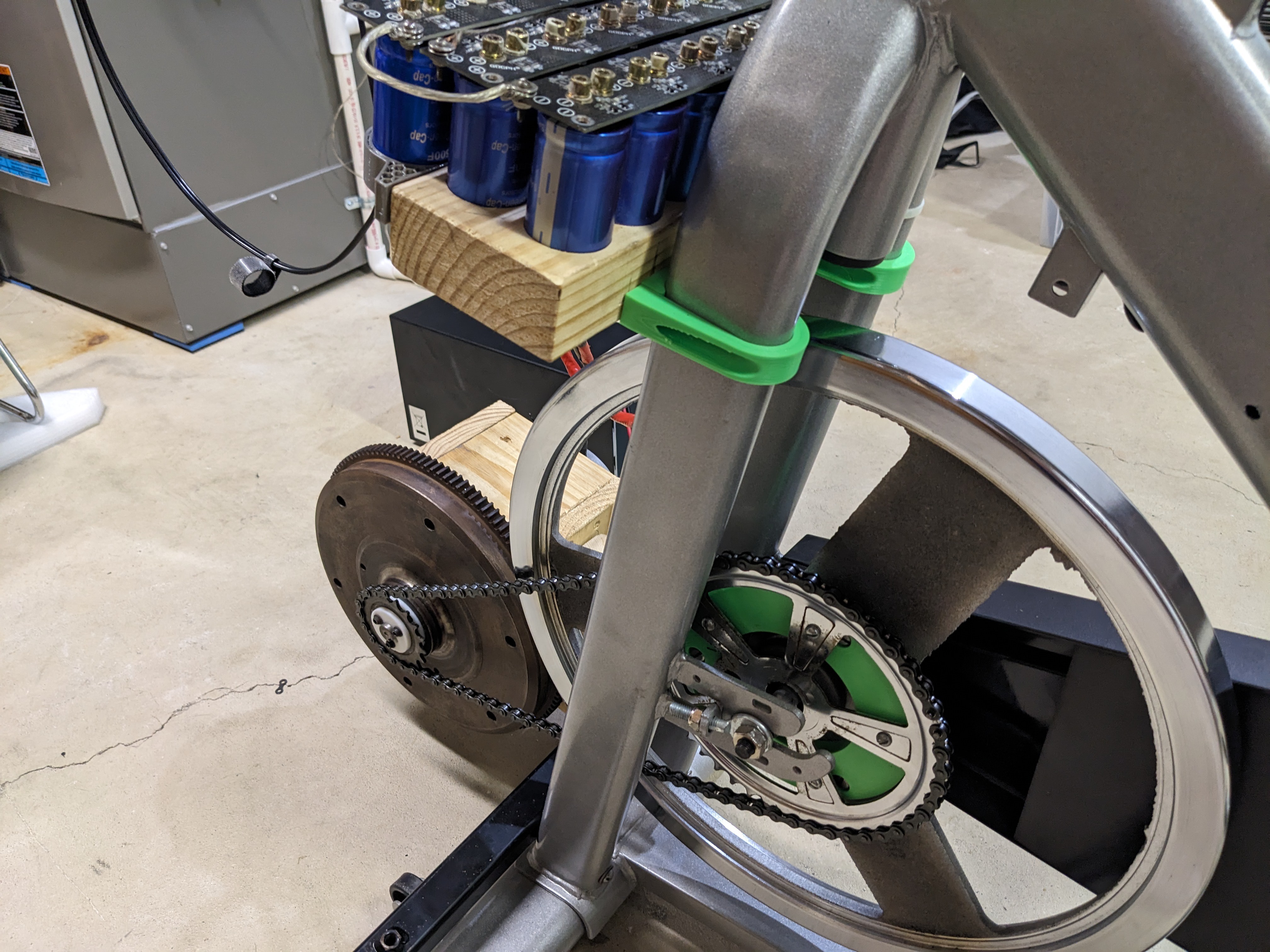



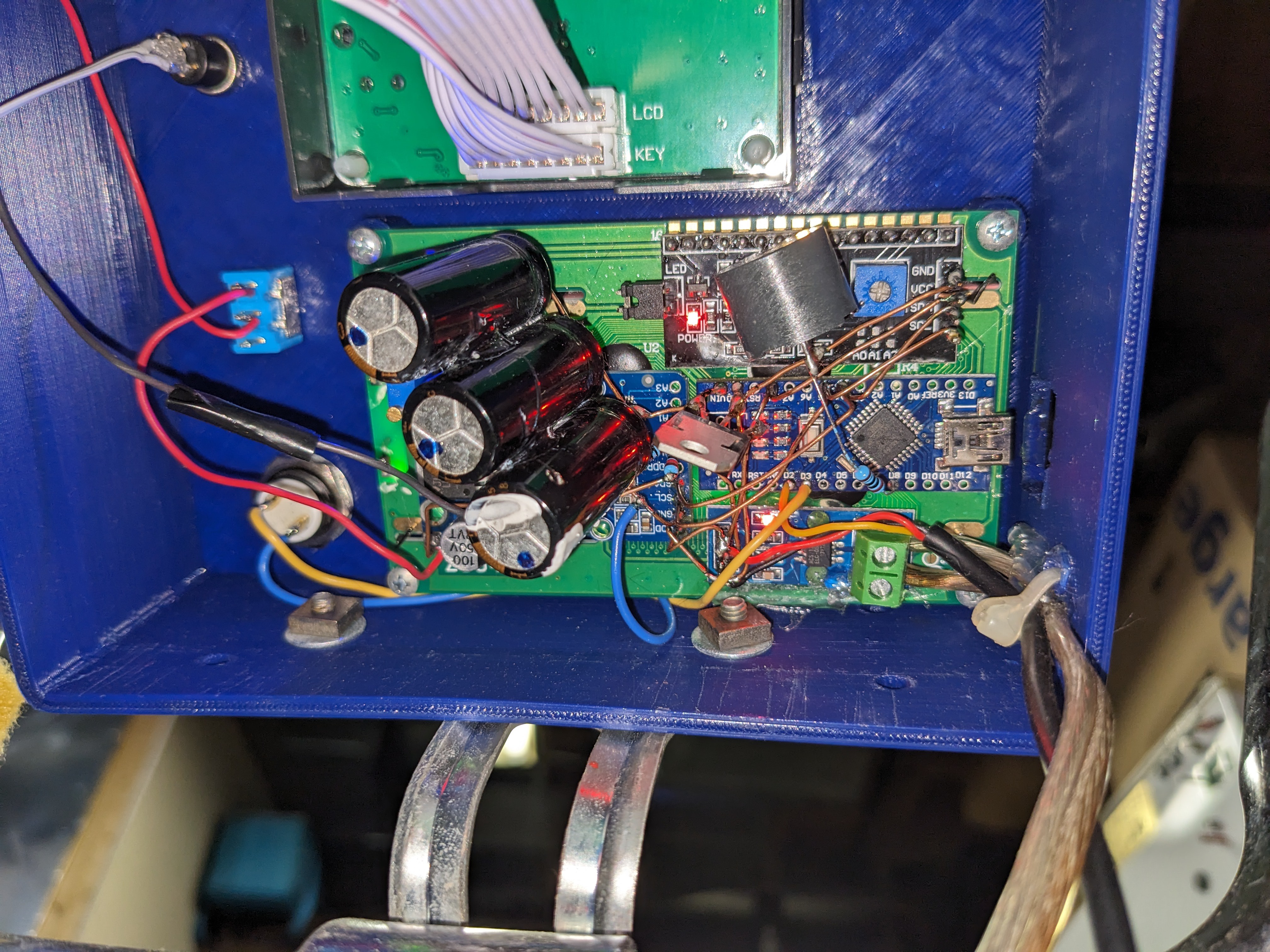
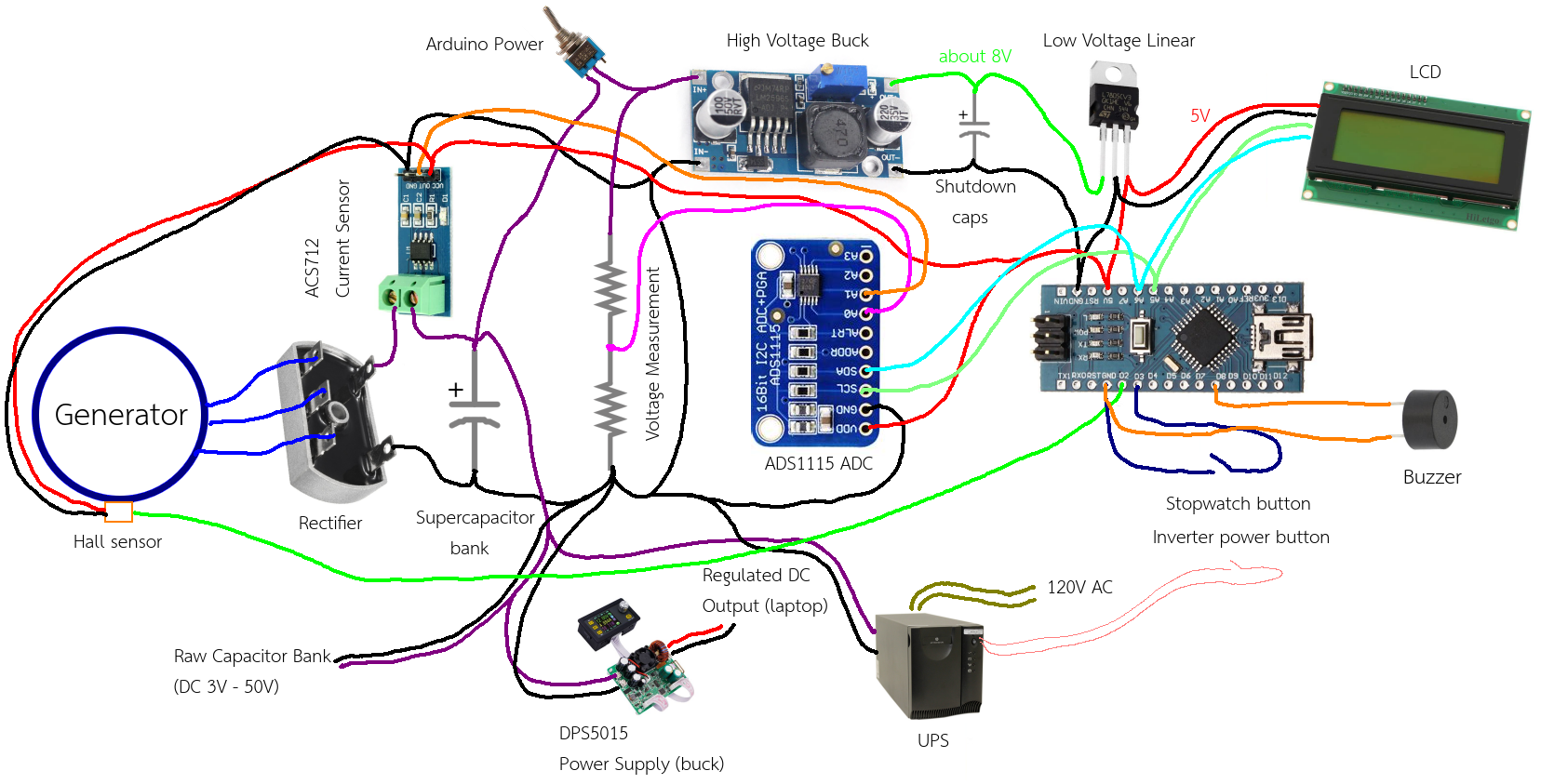
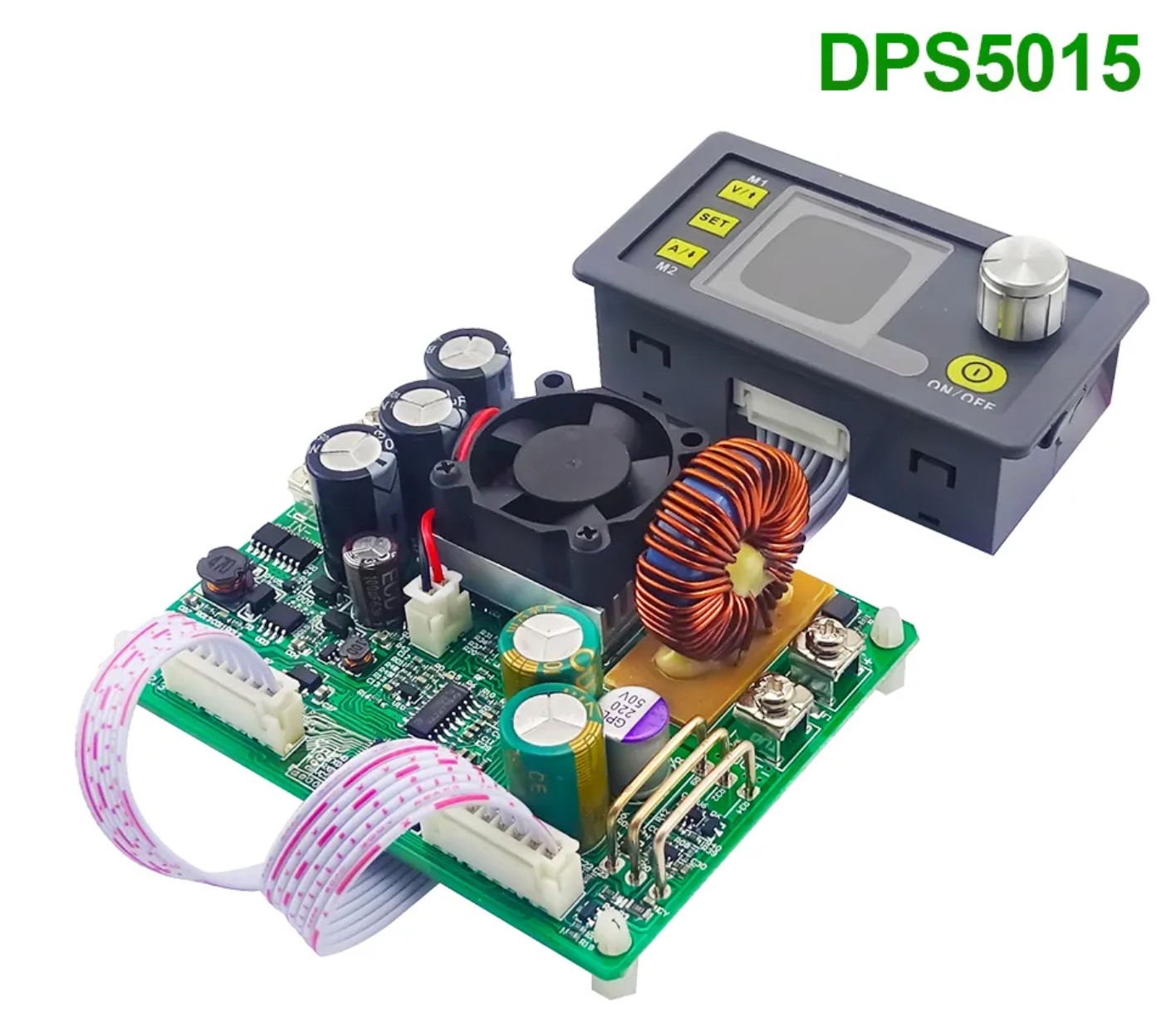

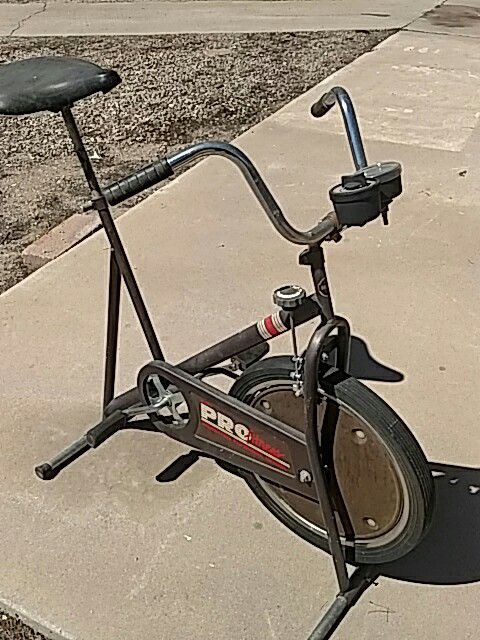
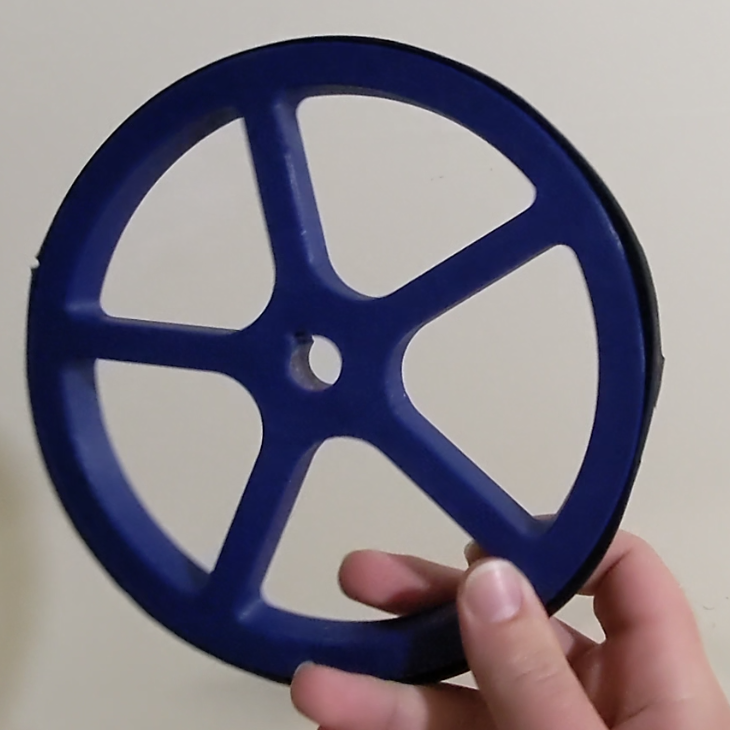


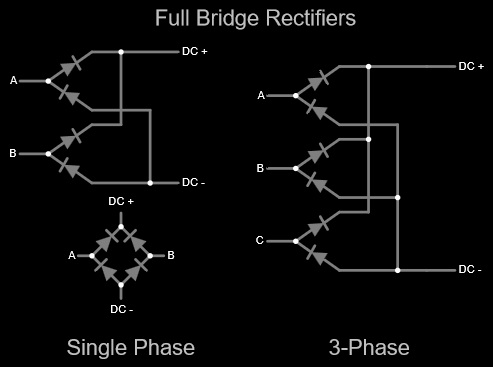

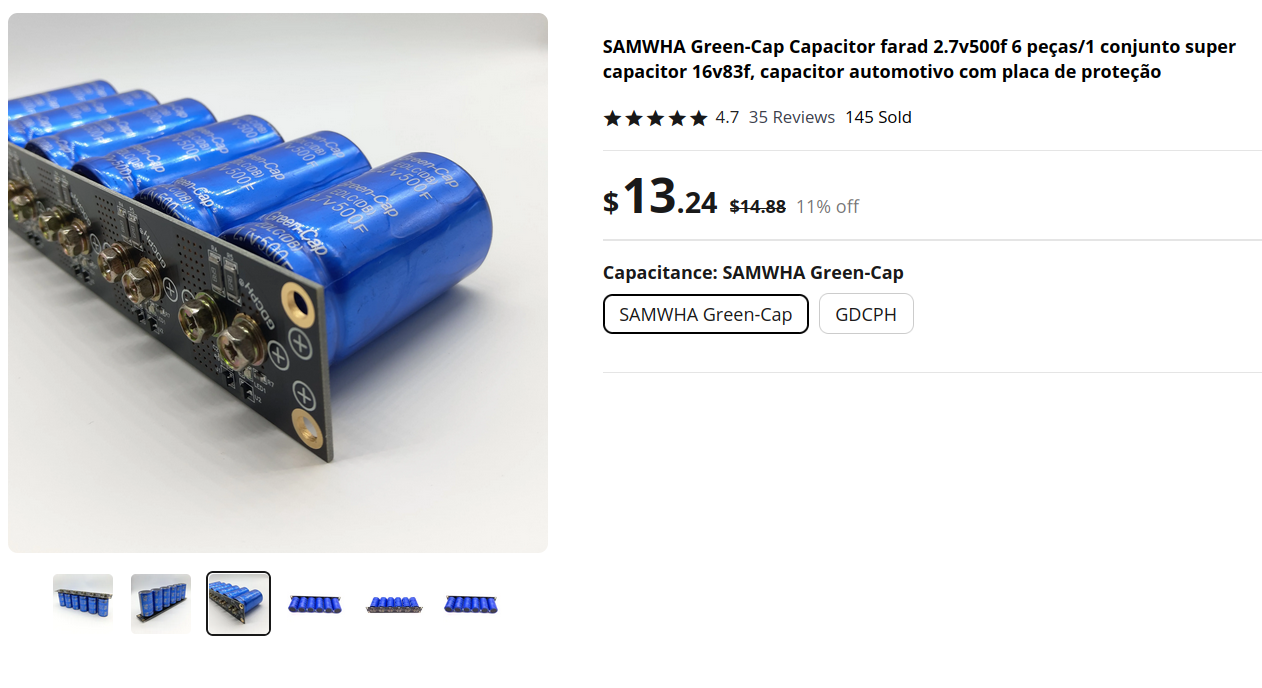

 ServError
ServError
 Josh Starnes
Josh Starnes
 Jan Waclawek
Jan Waclawek
 Dan Maloney
Dan Maloney